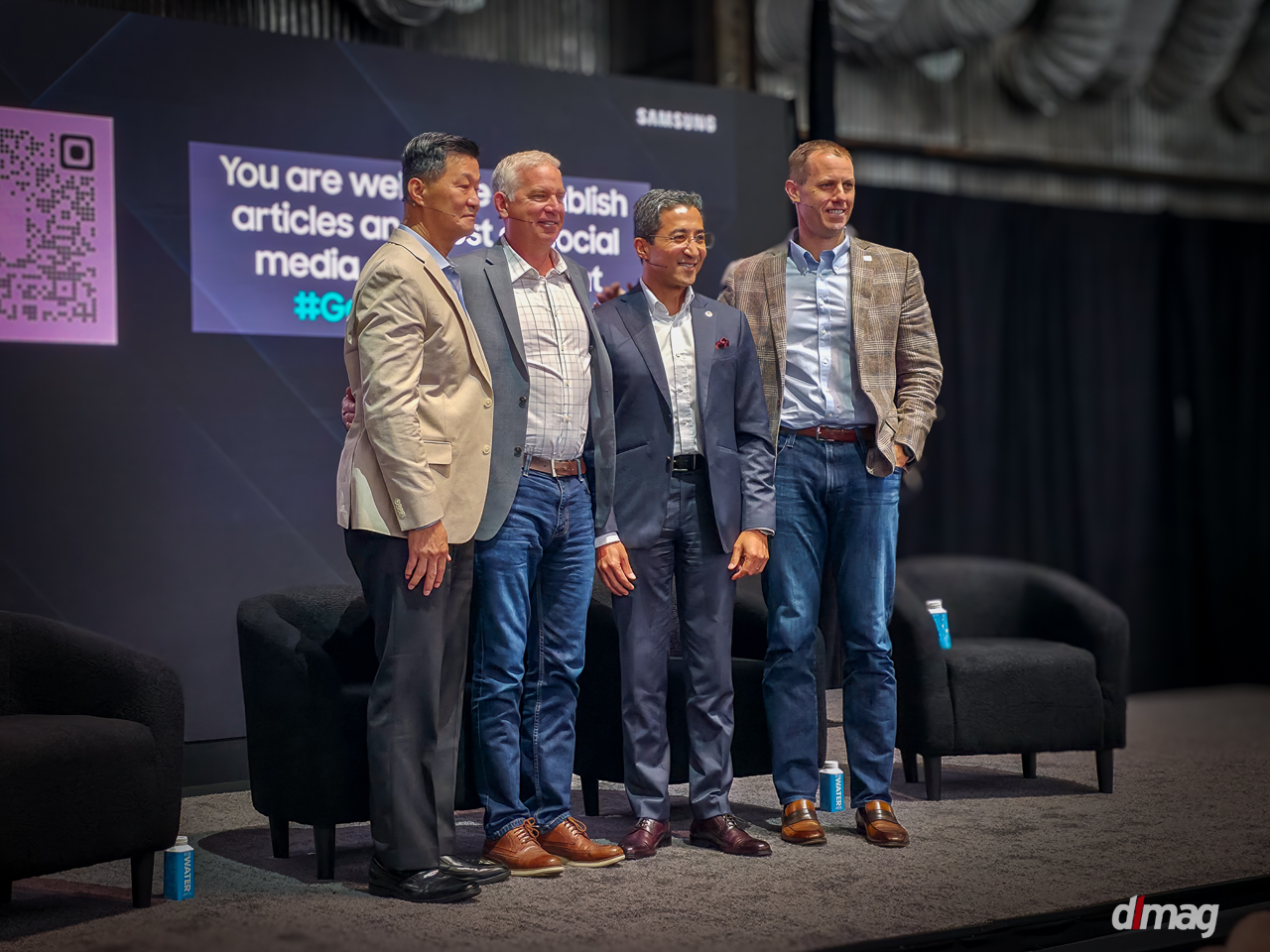While the Galaxy Fold7 captured headlines at Samsung’s Unpacked event, the real story unfolded at Brooklyn Fish Transfer, where Samsung’s acquisition of Xealth signaled the tech giant’s audacious entry into healthcare’s most complex challenges. The industrial venue, with its exposed beams and concrete floors, provided a fitting backdrop for a discussion about rebuilding healthcare’s infrastructure from the ground up. “Samsung started as a grocery store not that long ago and is now a global technology company innovating for the future,” declared Dr. Hon Pak, Senior Vice President & Head of Digital Health Team at Samsung Electronics. “It gives me hope that we can do what is unimaginable.”
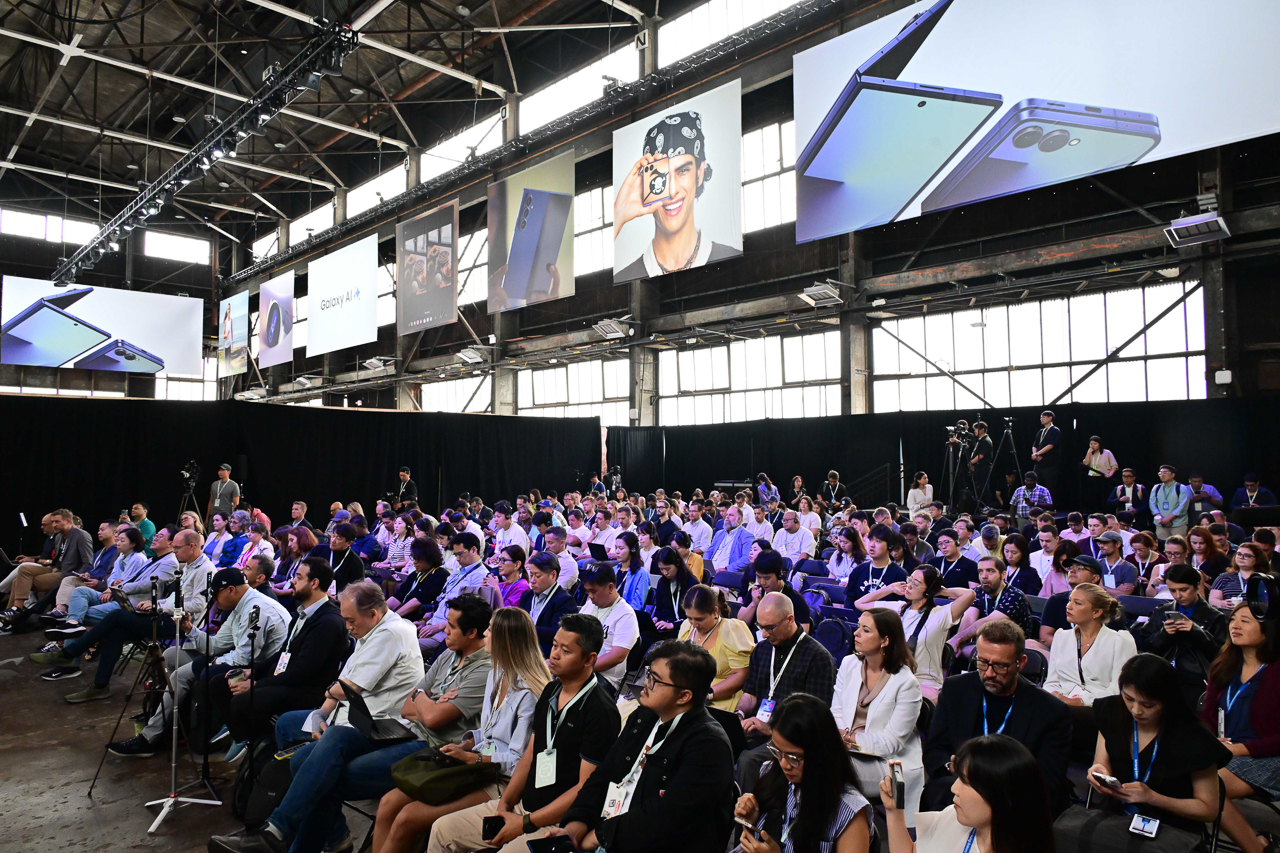
This transformation story mirrors the three fundamental changes Samsung is driving in healthcare today. Through strategic partnerships and ecosystem development, they’re addressing systemic problems that have plagued the industry for decades. The convergence of AI, wearable technology, and clinical expertise creates unprecedented opportunities to reshape how healthcare is delivered, experienced, and managed across the globe.
The Visionary Leading the Charge
Dr. Hon Pak moderated the healthcare forum with the authority of someone who has spent decades in medical innovation. His background spans serving as adjunct faculty at Georgetown University, editorial board member for the Journal of Telemedicine and eHealth, former Chair of The American Telemedicine Association Board, advisor for the Health category at the Consumer Electronics Show (CES), and Chief Medical Information Officer for the U.S. Army. Yet his motivation runs deeper than credentials.
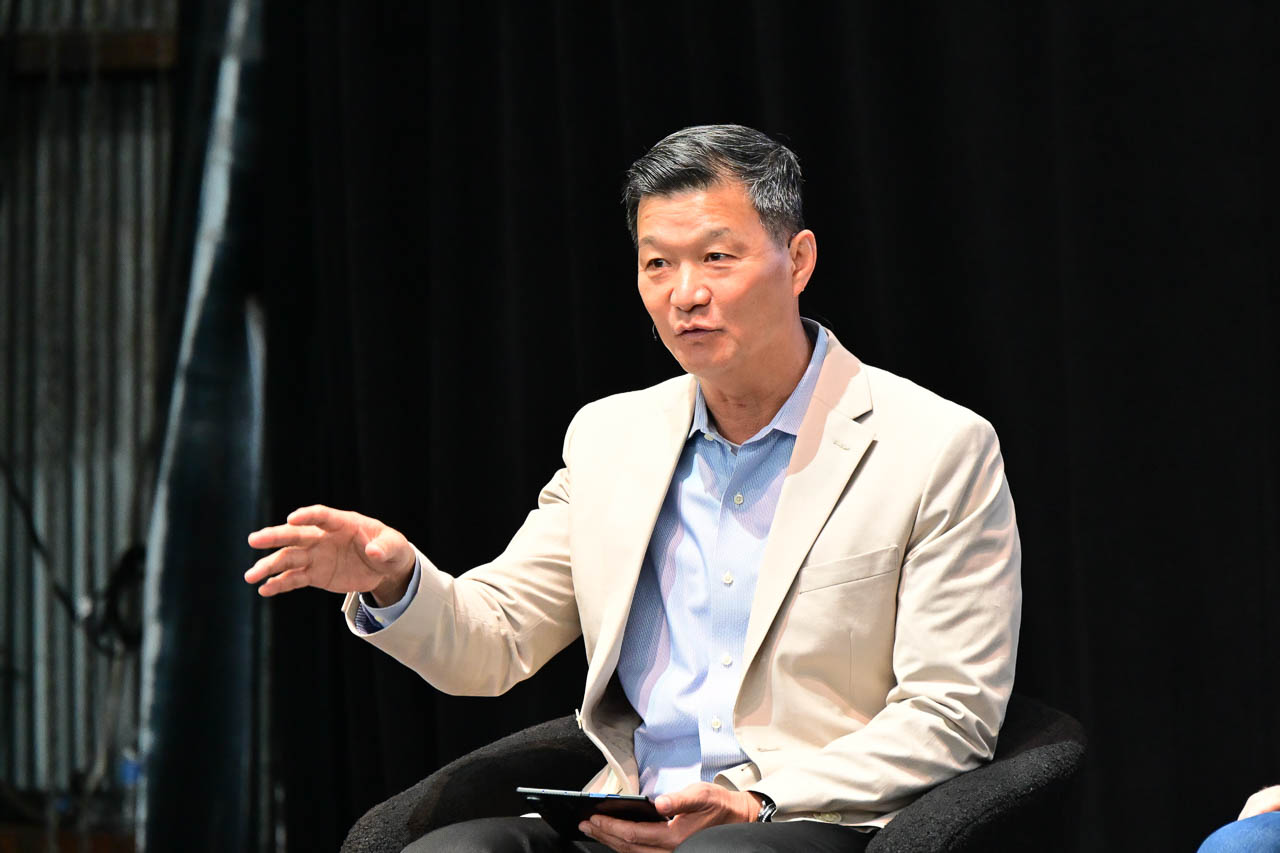
“My why has to do with my belief that regardless of skin color, your beliefs, or where you live, we all have some basic needs, and that need is about being loved and being able to love others around you,” Pak explained. “I think that’s a fundamental foundation that is common to all human beings, and we believe that in health, we have the opportunity to care for other people.” This philosophy drives Samsung’s healthcare strategy beyond simple technology implementation. “What’s more important in my mind is that this is not about Samsung changing healthcare. It’s about Samsung and its ecosystem enabling and bringing those players together so that we can make health a reality.”
Transformation One: From Patient-Centered to Person-Centered Care
Healthcare has long prided itself on being patient-centered, but Dr. Rasu Shrestha believes that’s not enough anymore. As Executive Vice President, Chief Innovation & Commercialization Officer of Advocate Health, he articulated this transformation with the precision of someone who has led health system innovation for decades. “For the longest time in health, we’re always talking about patient-centered care,” Shrestha explained. “And as a physician, I have to tell you, it is important, it is critical. You always have to have the patient in the middle. But the opportunity here is to broaden that aperture from patient-centered care to person-centered care.”

“When we look at a person and say, ‘that’s my patient,’ I’m thinking of vital signs and past medical history. But when I think of a person, I think of what are their needs? How are they living day to day? How are they sleeping? That needs a complete mindset change,” Pak added. This shift enables movement “from more of an episodic, broken and fragmented care methodology and business model that drives healthcare today to more of a connected, ubiquitous, always-on system of health.”
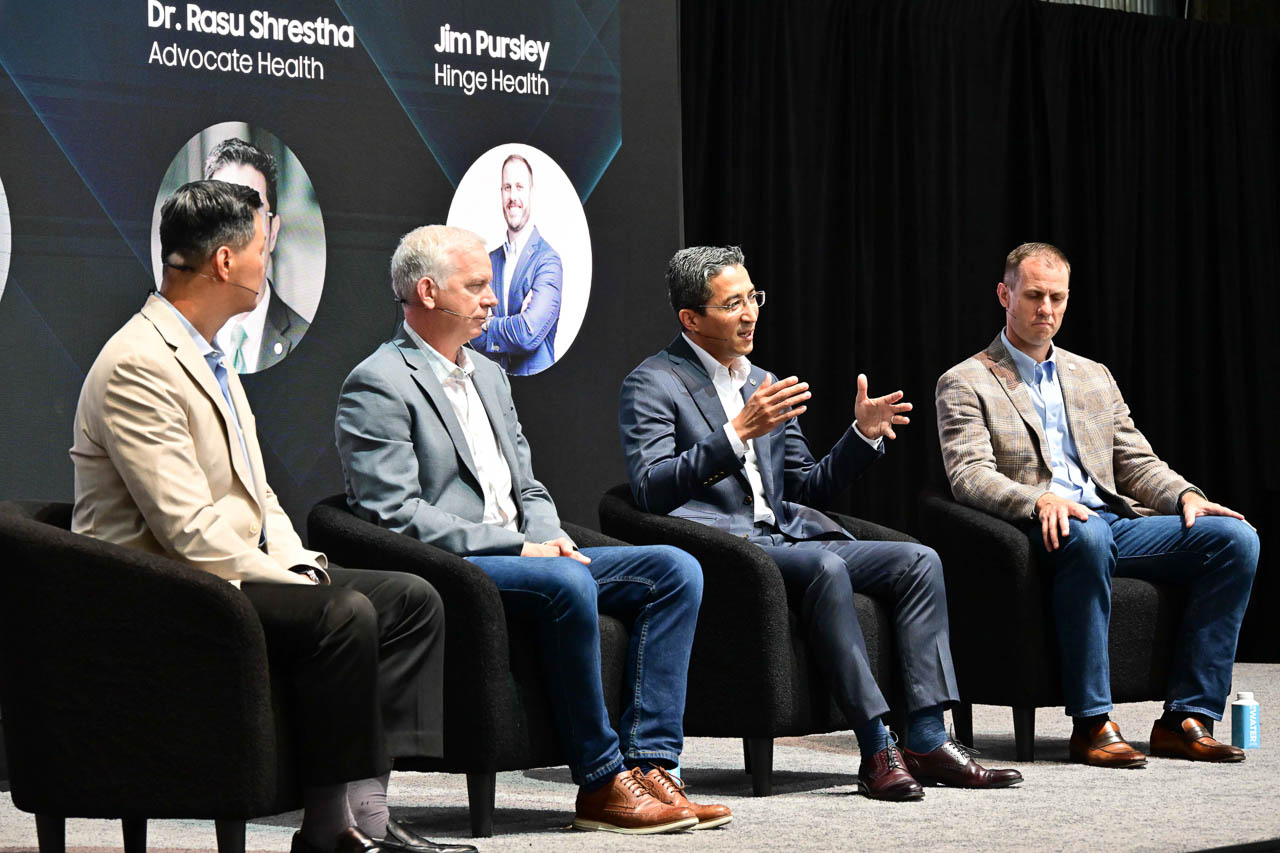
Shrestha’s credentials lend weight to this vision. Prior to Advocate Health, he served as Chief Innovation Officer at UPMC, where he earned global recognition for spearheading healthcare IT solutions. At Advocate Health, one of the largest health systems in the United States, he oversees transformative initiatives that leverage technology, data, and AI to redefine care delivery and improve patient outcomes. “My why is what got me into medicine in the first place. It’s the reason I became a doctor. It’s because I wanted to make a difference in the life of a patient, not just saving patients’ lives, but really making a difference in the life of a patient.”
Connected health, he emphasized, “really isn’t about devices or data. It’s about dignity. Patients and consumers around the world are asking us to hear me, to know me, to sense me, to really understand me.”
Transformation Two: From Hospital-Centric to Connected Care Everywhere
Advocate Health is betting big on a fundamental shift in where healthcare happens. “We’re really pushing at Advocate Health to broaden that aperture from just a hospital-centric way of providing healthcare to more of a connected care everywhere strategy. I talk about it as moving from bricks and mortar to clicks and mortar. Home is where the health is,” Shrestha explained.
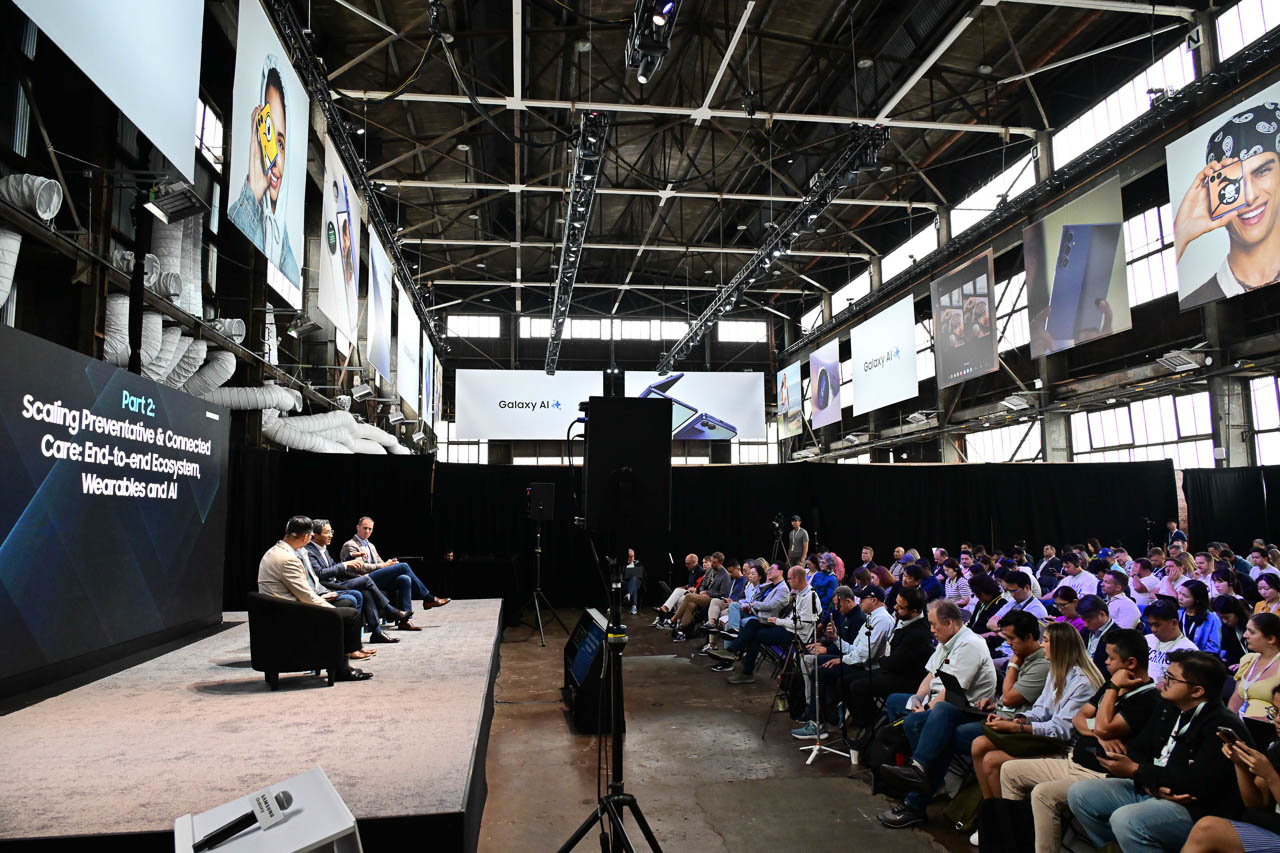
Hospitals will never disappear entirely. “Hospitals will never go away. I’m a radiologist. We’re going to need scans, surgeries, procedures. We’re human beings. We’re going to break down. Hospitals will not go away.” But their role evolves dramatically. “I see with what we’re talking about today, with Samsung and Xealth coming together, the opportunity to really reposition hospitals as what I call care traffic control centers.”
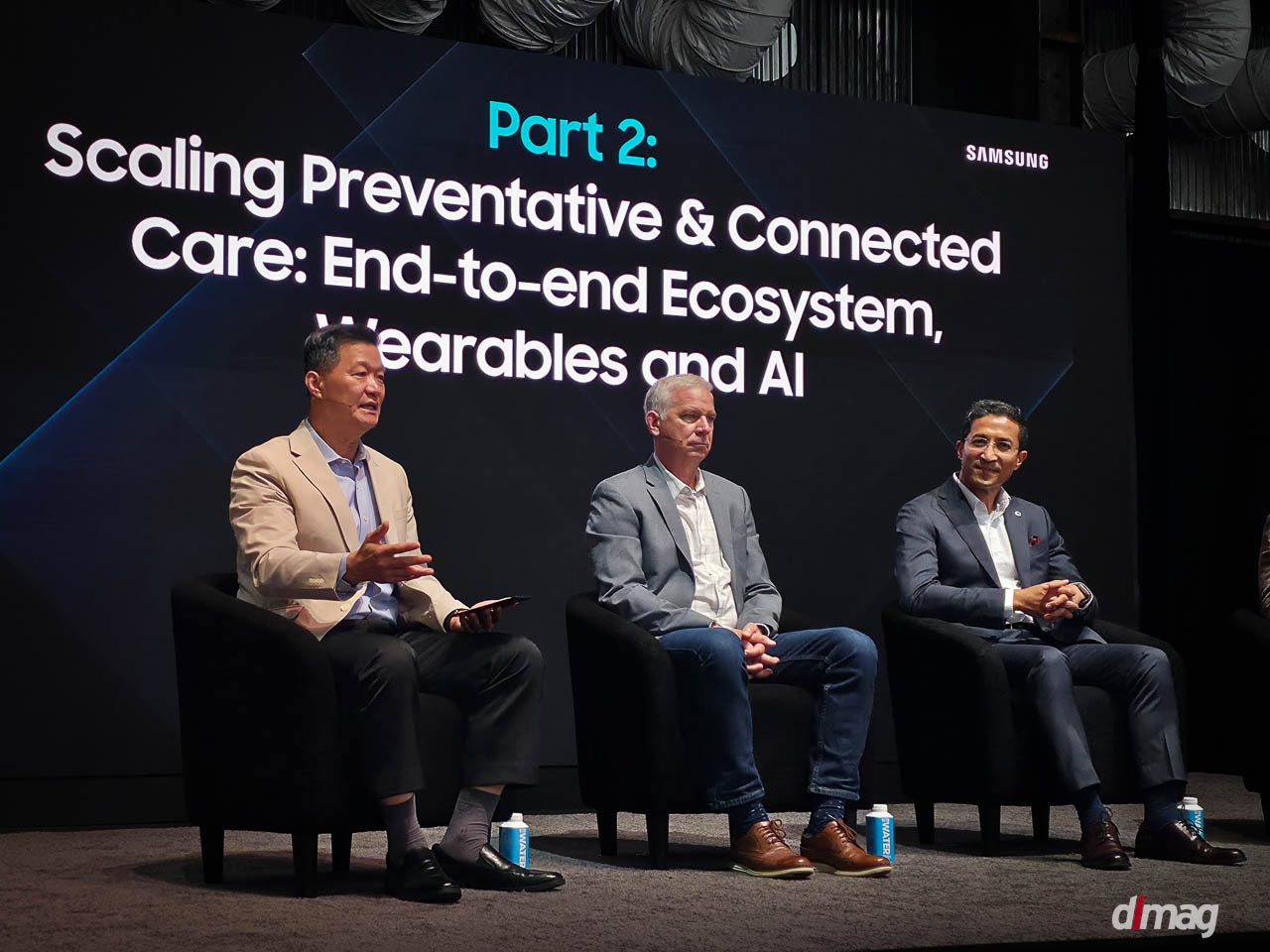
At Advocate Health, this vision drives their strategic planning through what they call “Rewire 2030,” their next five-year strategic plan. “As part of Rewire 2030, one of our highest priority items meshes directly with everything that we’re talking about here today, and it is our priority of what we call health at home and wellness. That is one of our six strategic differentiators that we are betting on.” Investment scale demonstrates serious commitment. “We’re investing heavily into this. We’re building directly around it in terms of how we’re evolving as a health system. Another part of our Rewire 2030 paradigm is what we call our innovation partnership ecosystem.”
Transformation Three: From Transactional to Experiential Healthcare
Anyone who has navigated the healthcare system knows the frustration Shrestha described. “The biggest challenge that we’ve had in healthcare today is that it is highly transactional. It’s about ICD-10 codes and CPT codes, and it’s about billing codes, and it’s about schedules, and it’s very transactional.” Meanwhile, consumers expect something entirely different. “Yet we as consumers, people, human beings, all of us live in an environment where it really is about experiences. So the opportunity is to elevate healthcare from transactional healthcare to experiential healthcare.”
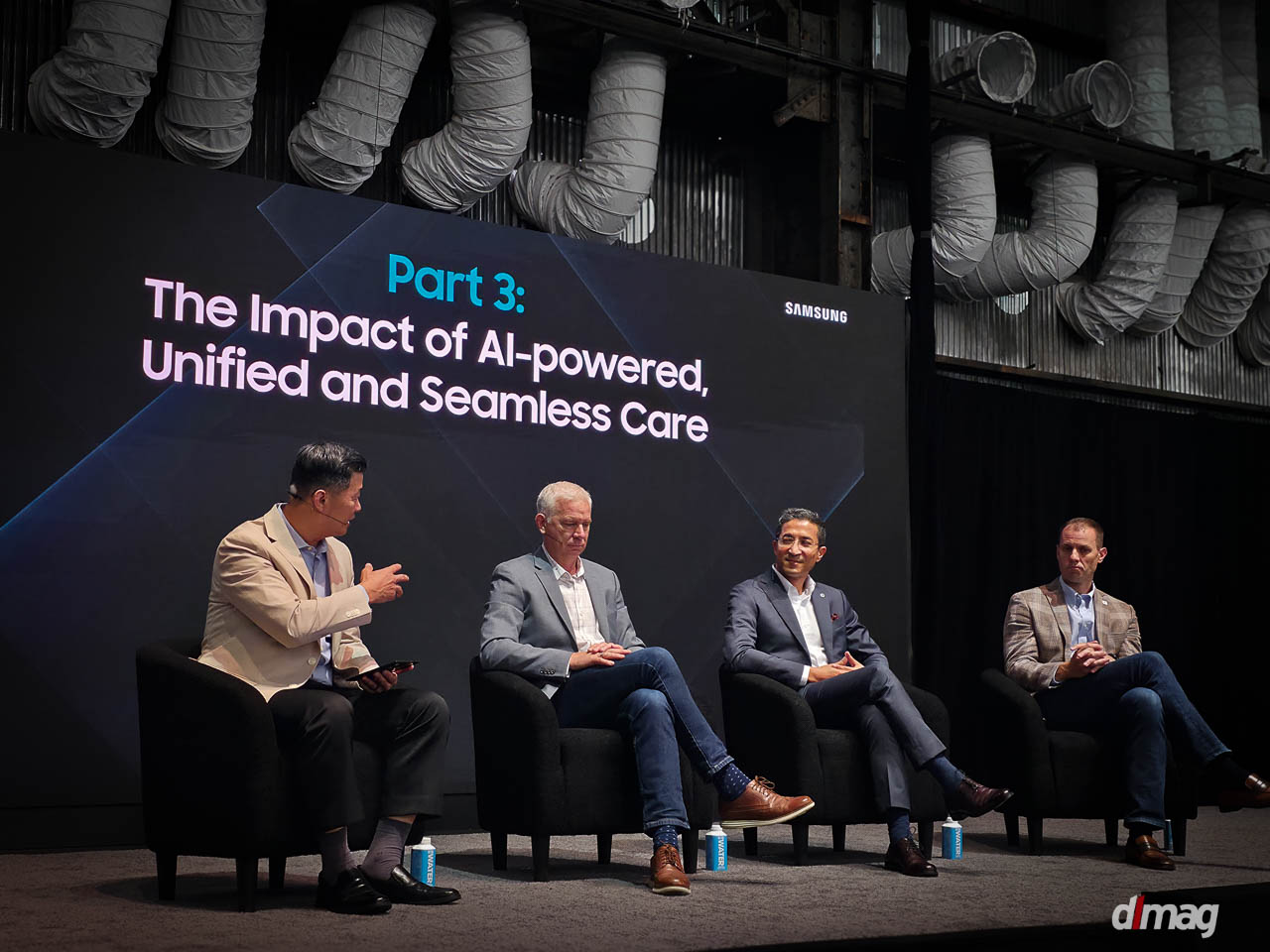
Simply throwing digital technology at broken processes won’t solve the problem. “The challenge is that if you take digital and throw digital at a broken process, you end up with a broken digital process. So what we need to do, and the power of Samsung coming together with Xealth working with companies and entities like us, is to really say, ‘All right, what is the root cause of those challenges? How do we address the broken processes so that we can bring in the power of digital, AI and connected devices and sensors?'”
The Xealth Acquisition: Mobile Expertise Meets Healthcare Need
Michael McSherry brings a unique perspective to healthcare as someone who has successfully built and sold multiple technology companies. His background includes co-founding six companies, most in mobile technology, and extensive work with Samsung. Among his successes is Swype, the keyboard technology acquired by Nuance Communications. “My why is obviously friends and family. A balanced life is incredibly important to have longevity and health and wellness in life. But intellectually, I have a passion for curiosity, and that’s led me to co-founding six different companies. That’s been my career in startups.”
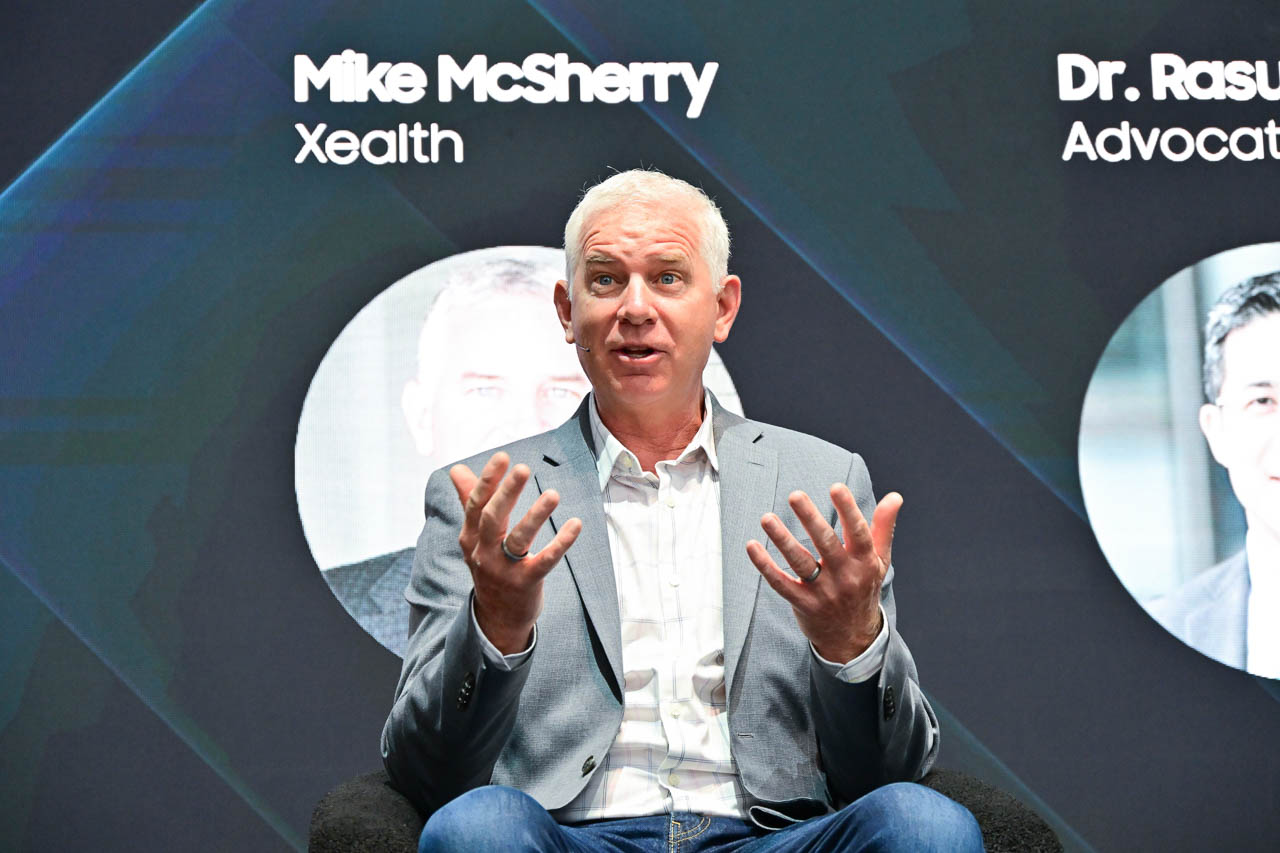
His journey to healthcare was intentional. “Using our energy and knowledge around mobile, we saw the inevitability that it was going to bridge into healthcare, and we asked how we would use our talent and passions to bring the mobile skills and development and touchpoints to traditional care.” Xealth emerged from an unusual incubation environment: inside Providence, one of the largest hospital systems in the country. This created a solution that allows clinicians to prescribe digital interventions. “That might be an app to manage diabetes or pregnancy, it could be an Uber ride to get someone to an appointment, or meal deliveries to recover from post-surgical events.”
Timing of Samsung’s acquisition couldn’t be more strategic. “First off, I’m incredibly excited about the opportunity of working with Samsung. They bought Xealth earlier this week, and we’re thrilled with what we can do together to greatly simplify care and connect care into traditional provider and clinician workflows. That is so valuable and crucial to the future of care.”
McSherry’s vision for the Samsung-Xealth integration addresses one of healthcare’s most persistent problems: device proliferation. “This phone plus your devices – the watch, the ring – are going to replace the standalone blood pressure monitor, the pulse oximeter, a variety of different devices. It’s going to be one packaged solution and that’s going to simplify care.” Current remote monitoring creates unnecessary complexity for healthcare providers. “It’s complex for the hospital system to determine what someone getting released from a lung transplant surgery needs to remotely monitor their health versus someone getting released from an orthopedic procedure. Each procedure requires different levels of remote monitoring. If one device can do so many more elements of remote monitoring, you’re simplifying care and reducing costs.”
The Constructive Insurrectionist: Hinge Health’s Approach
Jim Pursley describes himself as a “constructive insurrectionist” in healthcare, and his background supports that characterization. As President of Hinge Health, the digital musculoskeletal company, he oversees care for millions of people managing chronic pain. His career spans roles as Chief Commercial Officer of Livongo Health and various executive positions at Care Innovations and GE HealthCare Technologies.
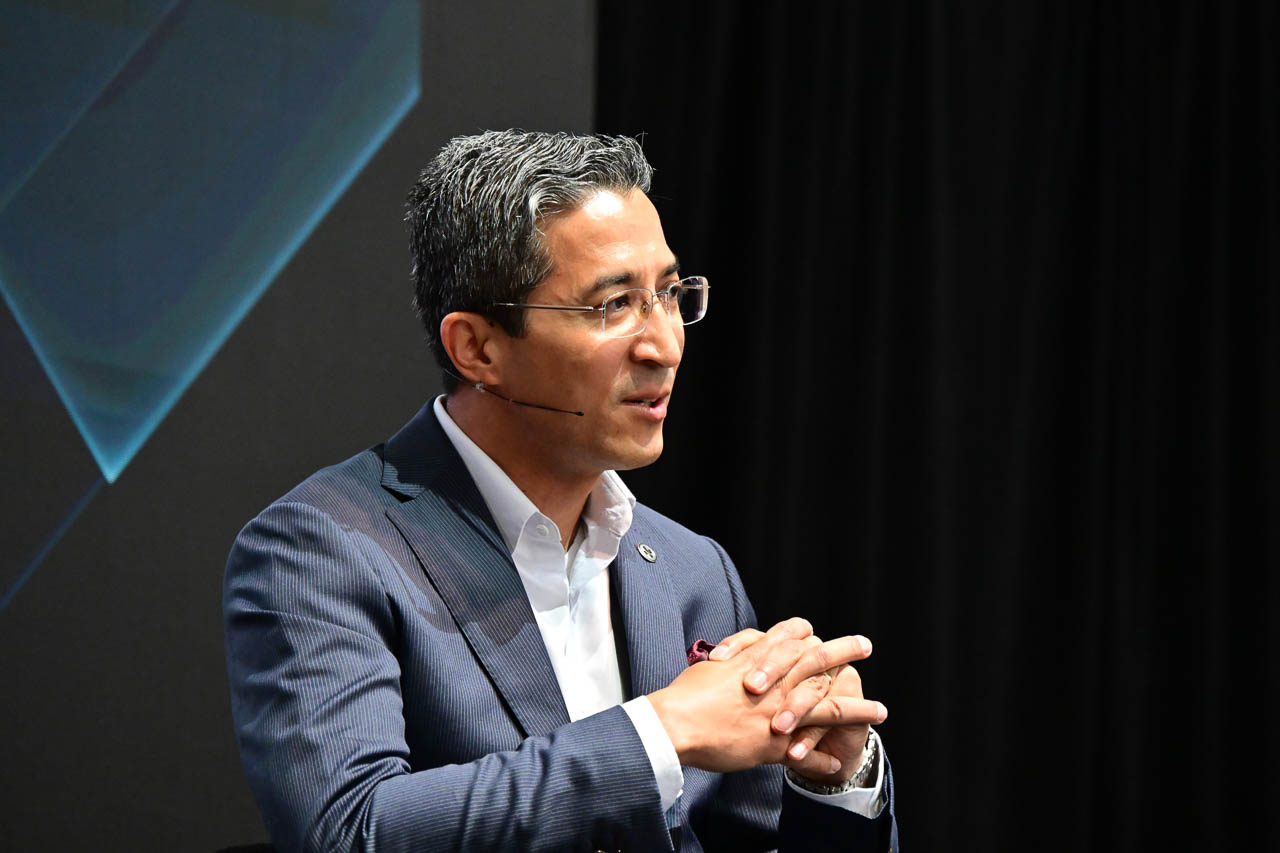
Personal motivation drives his professional mission. “Everybody in this room, everybody watching online, has hopes, aspirations, desires for themselves, for their family. And you think about health – while maybe not sufficient, it is absolutely necessary for all of that. We all know somebody who seemingly has it all, who’s at the top of their field, their profession, everyone envies them for whatever reason, and yet they don’t have their health. Very quickly you realize how little everything else matters, and nothing else is possible without that foundational, basic element of good health.”
“The ability to give the gift of health, to fight for people’s health, is something very fundamental and basic to the human condition, and something that we get really passionate about. I get really passionate about it, and it’s a pleasure and privilege to be on stage with all these other great people who are pushing in the same direction.” Numbers tell the story of digital health’s potential reach. “About 25 million Americans are covered by Hinge today. My guess is some of you in the audience may have access to Hinge. If any of you have hip, knee, back, shoulder, elbow, neck, whatever kind of musculoskeletal pain, check us out and see AI. See the power of technology at work as we’re able to approximate physical therapy in the palm of your hand.”
Pursley’s diagnosis of healthcare’s fundamental problem resonates across the industry. “There’s not a lack of innovation, there’s not a lack of good doctors, there’s not a lack of clinical technology. There’s a lack of unification.” His call to action was direct: “Push us to unify. Don’t accept the status quo. Be constructive insurrectionists in this fight to unify care, to elegantly integrate the physical and digital. And I think if we can do that, build that infrastructure, we’re going to be in a lot better shape than we are today.”
Samsung’s AI Strategy: The Holistic Health Coach
Samsung’s AI ambitions extend far beyond simple data collection. Pak announced significant developments launching later this year: “At the end of the year, we’re going to be launching a beta version of a health assistant health coach that is holistic across the four pillars. It is our beginning of our journey, but I’m very excited about what this means, because today we’ve been giving you separate guidance – here’s what you do for sleep, here’s what you do for activity – but we’re not pieces, we’re a whole.”
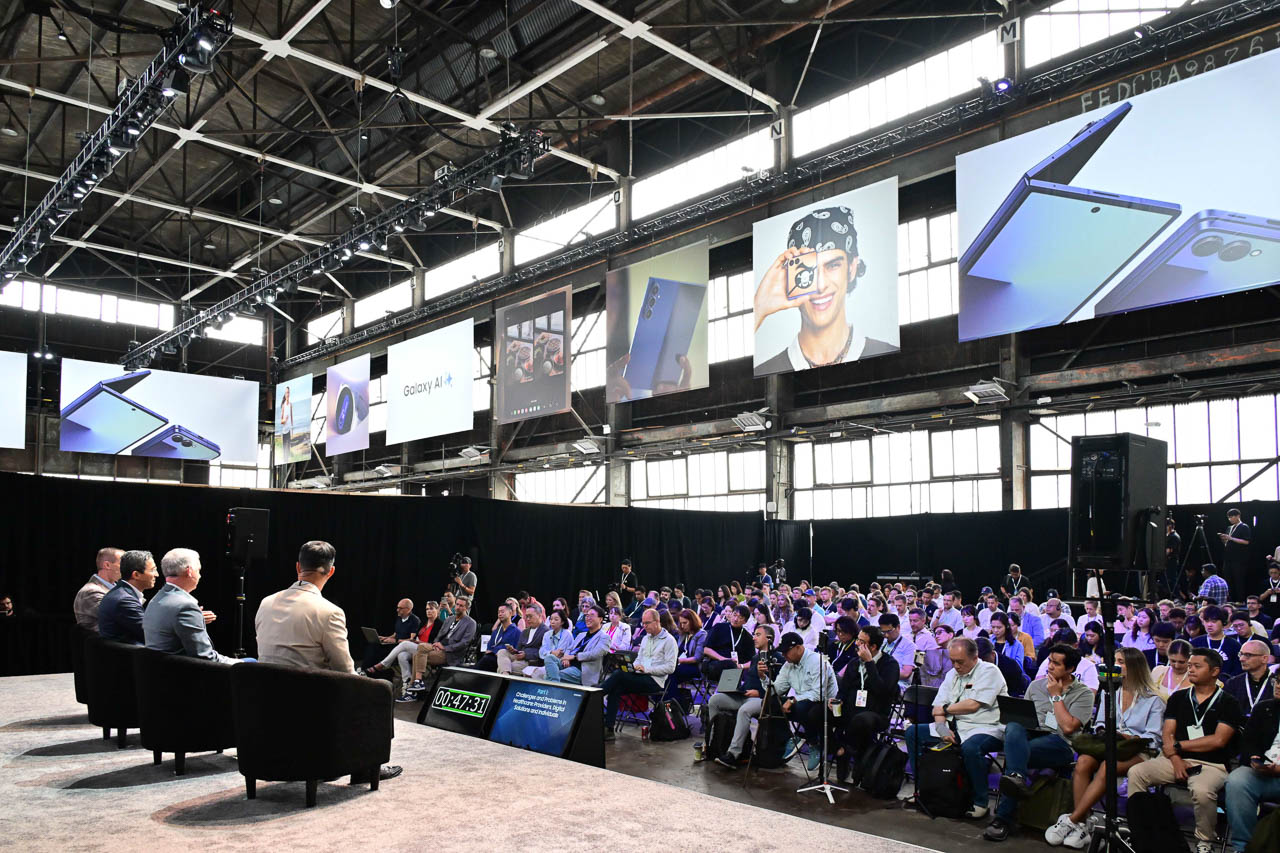
Acknowledging imperfection while embracing iteration defines Samsung’s approach. “It’s going to be imperfect. I’ll be the first one to tell you, but you know what? Experience will give us feedback, and we’ll continue to evolve it so that we can envision this future together.” Customer feedback drives Samsung’s focus on actionable insights. “Clearly from a Samsung perspective, what we’re interested in, what our customers have told us is: ‘Look, don’t just tell me what my problems are, but don’t just tell me I’m sleeping poorly – tell me something useful, so I can actually do something about it.'”
Samsung’s ecosystem strategy extends beyond their own technology to embrace partners like Hinge Health. “And that got us thinking, ‘All right, we can give you the data in a meaningful way, easy to understand. Give you insights and maybe even a little light coaching. But when we realized that we have people like Hinge and others that are doing some amazing innovative things, we said, ‘What would that look like to be able to connect a marketplace of innovative solutions?'”
The Historical Moment and Future Vision
Pak believes this moment will be remembered as transformative. “Looking at digital health as we look 10 years from now, I bet many of you probably don’t realize this is probably one of those pivotal moments, when we’ll look back and say, ‘Remember, this is when the bridge was built.'” His closing words carried the weight of conviction: “If you don’t remember anything else, I hope that you’ll look back and say healthcare changed today, and I really mean that from the bottom of my heart, because healthcare really needs change. It’s not the lack of innovations, it’s not the lack of great physicians – somehow the infrastructure pieces and the things that AI now can do for hyper-personalization, hyper-contextualization and scale now gives us hope to be able to do what we need to do.”
Pak also acknowledged the graveyard of failed healthcare disruption attempts. “Please know that many skeptics out there will say many great people have come and many dead bodies have been strewn along this path for trying to disrupt and improve healthcare. But also know that Samsung started as a grocery store not that long ago and is now a global technology company innovating for the future. It gives me hope that we can do what is unimaginable.”
Healthcare’s complexity demands collaborative solutions, as Shrestha emphasized throughout the discussion. “The reality is that with all of the challenges that exist in healthcare, it is not any one entity that can heroically go in and save healthcare. It really takes an ecosystem.” Success requires willing collaboration. “What it takes is a willing set of partners and collaborators that are enabled by the set of technologies and capabilities in this more open ecosystem approach that we’re talking about today. And that’s what I’m really excited about, because at the end of the day, it’s going to make a specific set of differences to the Quadruple Aim.”
Optimism pervaded Shrestha’s closing thoughts. “The word I’d share with you is hope. The panel, the conversation, the events that are happening as a result of Samsung and Xealth coming together, and the dialogue that we’re having here just gives me hope. It gives me hope that finally, we’ll be able to solve some of the biggest challenges that exist in healthcare today.”
From a grocery store to a global technology leader, Samsung’s corporate journey mirrors the healthcare transformation they’re now leading. The convergence of AI, wearable technology, and healthcare expertise creates unprecedented opportunities to address systemic challenges that have persisted for decades. The panelists’ collective vision extends beyond technology implementation to ecosystem transformation, positioning this collaboration as potentially transformative for healthcare delivery. Their shared commitment to person-centered care, supported by AI-driven insights and seamless data integration, suggests this initiative could mark the moment when healthcare fundamentally changed from fragmented, reactive care to connected, proactive health management.

